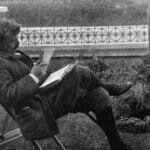Is the Family Court Family Friendly?
Touchy, touchy. That is the immediate reaction one gets to the latest comments by Family Court Chief Justice Alistair Nicholson. Speaking in Brisbane on Wednesday, Justice Nicholson said that “right-wing” groups and dysfunctional malcontents (usually fathers unhappy about custody and access decisions) were waging war against the Family Court, and wrongly accusing it of destroying the institution of the family. However, the Chief Justice is too experienced a public figure not to understand that the linking of the term “dysfunctional” with “right-wing groups” (as defined by one who was overwhelmingly a left-wing politician) will not reflect unfavourably on the latter.
As a major defender of the 1975 Family Law Act, Justice Nicholson should know that there are good grounds for anger, disappointment and frustration directed towards the Family Court. Whenever I write on this subject, my office is flooded with calls from grieving fathers who tell of their heartbreak and devastation over their marriage bust up (75% of divorces being initiated by women). They speak of their grief at not being able to see their own children, because court orders are not being enforced. Indeed, this outpouring of grief was clearly shown at the hearings on Family Law reform held in 1993/4. Some 7,000 submissions were received, the largest number for any inquiry ever conducted by the Australian Parliament, and more than 150,000 attempts were made by Australians to contact the Inquiry on a special telephone hotline.
There is also good reason for believing that the Court and the Family Law Act have contributed to the breakdown of the family. Although divorces began to rise in the early 70s, they more than tripled after the passage of the Act. The removal of fault led to the removal of the concepts of obligation and responsibility. Before the Act, family law emphasised the importance of the marriage bond. A function of the law was to strengthen good impulses in people and control bad impulses. With the abolition of fault, the law now neither protects the vulnerable nor curbs the unscrupulous. Instead it sides with the spouses who want out. Selfishness and egoism are rewarded while commitment, self-sacrifice and responsibility are undermined.
The Chief Justice claims to be protective of the rights of children, and has argued for children’s rights over against parents’ rights. One million children going home to one parent households might not all have the same view of the judge.
Moreover, it should be pointed out that when legislators made this revolutionary break with legal tradition, they did so in response to noisy activists and lobby-groups, not to widespread public pressure. Divorce reform was not the result of mass support, but of the political activism of a small group gathered around the father of the Act, the Late Lionel Murphy. Justice Nicholson says the Act simply mirrored social opinion. Many others think it helped to lead public opinion.
By adopting no fault divorce statutes, the state becomes not just indifferent to the institution of marriage, but hostile to it. As Lenore Weitzman put it, “a radical change in the rules for ending marriage inevitably affects the rules for marriage itself and the intentions and expectations of those who enter into it.” Unilateral divorce “shifts the power from the spouse who wants to remain married to the spouse who wants to get divorced.”
As Barbara Whitehead puts it, two results are noticeable. The first is deinstitutionalisation: the erosion of marriage as a social institution embodying widely shared moral values. The second is dejuridification: the shrinking of the legal regulation of marriage. “Together,” says Whitehead, “these processes have transformed marriage from a binding social commitment to an essentially private, freely terminable lifestyle option. In essence, divorce has become a ‘right’ — less a judicial issue than an administrative procedure.”
Of course the right to easy divorce was part of the larger push for rights of all kinds in the 60s and 70s. During this time says Mary Ann Glendon, “the ‘no-fault’ idea blended readily with the psychological jargon that already had such a strong influence on how Americans think about their personal relationships…(and) fit neatly into an increasingly popular mode of discourse in which values are treated as matters of taste, feelings of guilt are regarded as unhealthy, and an individual’s primary responsibility is assumed to be to himself.”
The idea of no-fault tells us that, when a marriage ends, no one is to blame. People change; people grow apart; and they must be allowed to pursue their own happiness. No-fault terminology tells us that marriage is essentially a private matter, designed for the fulfilment of the individual spouses. As Whitehead puts it, “Other prospective stakeholders in the relationship — such as children or the society as a whole — are understood to be at best minority shareholders whose claims are effectively without standing and therefore unenforceable”.
The end result is the redefinition of marriage itself. For example, about two years ago the Marriage Guidance Council of Australia changed its name to Relationships Australia, because of the inclusion of gay relationships. All of which fits in neatly with Justice Nicholson’s push for legal recognition of same sex couples – something which he urged in early January. Concerning this Justice Nicholson warned on Wednesday that Australia was becoming increasingly repressive and authoritarian because of intolerance to same-sex relationships. He said his comments and those of the Governor-General’s a few months back were met with a “hysterical reaction” by strident and often unrepresentative voices.
Yet one wonders who is being hysterical and who is being representative. In the past year, one Victorian newspaper conducted nine separate telephone vote lines, all related to questions of granting homosexuals special privileges, marriage rights, etc. On all nine questions the overwhelming majority of callers rejected the idea of granting special privileges to homosexuals. (The average of the nine polls shows that 8.5% of those polled favour the pro-gay position, while 91.5% oppose the pro-gay position.)
As but one example, on January 6, 1995, the day after Justice Nicholson made his remarks about same sex relationships, this question was asked: Should gay families be officially recognised? The response was decisive: 3261 callers (or 92%) said no, while only 267 callers (or 8%) said yes. Granted, phone polls are not ideal means of measurement, but they do raise the question of who is being representative on this issue.
When Justice Nicholson attacked Jeff Kennett in 1993 over budget cuts made in Victoria, the Premier responded by saying Justice Nicholson was a “frustrated politician who was never able to make the grade”. Be that as it may, we do know that it is unworthy of the judiciary for the Chief Justice to describe those hurting under the Family Court as “discontented litigants, sometimes obviously dysfunctional”. The changes which the Family Law Act put into place, and some decisions of the Family Court, have left many – and not just men – hurting, despairing and angry. Instead of lashing out at these victims of the Court, perhaps Justice Nicholson should establish whether there are any legitimate grievances which need to be considered. Or, since he is obviously under considerable stress, perhaps he should just take a vacation.
[1207 words]




















Bill,
As always, you are spot-on.
Great article.